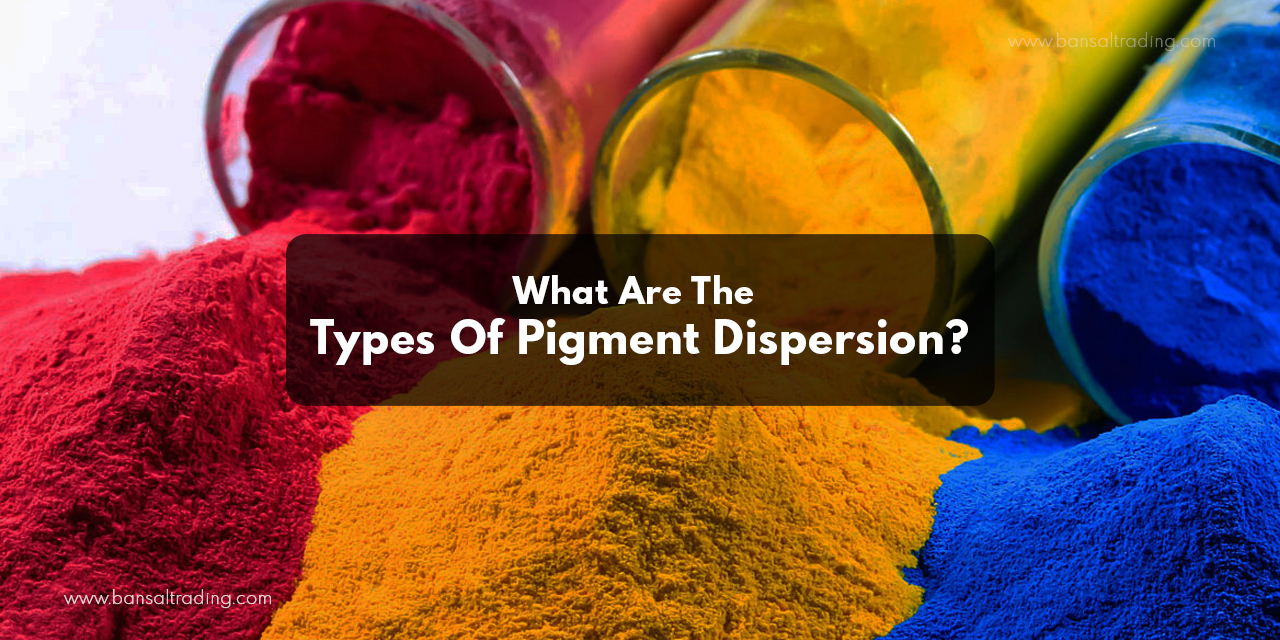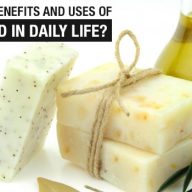What are the Types of Pigment Dispersion?

The process of pigment dispersion holds immense significance across a range of industries. In paints and coatings, it is integral for colour vibrancy and coverage. In the ink industry, it determines print quality. The cosmetic industry relies on it for consistent product colours and textures. Plastics and pharmaceuticals benefit from precise dispersion for aesthetic and functional requirements. The proper dispersion of pigments ensures that the final product exhibits the desired colour, opacity, and performance characteristics. This makes it a cornerstone in the manufacturing of countless consumer and industrial goods. Various industries are highly dependent on Chemical suppliers in Delhi for the hassle-free availability of these pigments.
What is Pigment Dispersion?
Pigment dispersion is a critical process in numerous industries, including paints, inks, coatings, cosmetics, and plastics. It involves breaking down pigment aggregates or agglomerates into smaller particles and uniformly dispersing them within a medium. Various types of dispersion techniques are employed for this purpose, such as mechanical dispersion, ultrasonic dispersion, bead mill dispersion, high-pressure homogenization, chemical dispersion, three-roll mill dispersion, and dry pigment dispersion. Each method offers distinct advantages and limitations, making the choice of dispersion technique essential in achieving the desired properties in the final products.
Also Read: Types of Pigments and Properties – Infographic
What is Paint Pigment?

Paint pigment is a coloured substance that is used to give the paint its colour. These pigments are finely ground particles that are mixed into paint to create the desired hue. Paint pigments can be made from a wide range of materials, including minerals, synthetic compounds, and organic substances.
There are two main categories of paint pigments: inorganic and organic. Inorganic pigments are typically derived from minerals and are known for their durability and resistance to fading. They are commonly used in architectural coatings and industrial paints. Organic pigments, on the other hand, are derived from carbon-based compounds and are often used in artistic paints and speciality coatings. Organic pigments can provide a broader range of bright and vivid colours but may not be as light-fast as inorganic pigments.
The choice of paint pigment can significantly impact the colour, opacity, and performance of the dispersion paint. Mixing different pigments in varying proportions allows for a wide spectrum of colours to be created, making them a fundamental component of the paint industry. Paint raw material suppliers in Delhi play a major role in distributing pigments for the paint industry.
Also Read: What Are The Best Paint Raw Materials
Types of Pigment Dispersion
Pigment dispersions are suspensions of insoluble pigments in a liquid medium. They are used in a wide range of applications, including paints, inks, plastics, cosmetics, and textiles. The types of pigment dispersion used depend on the specific requirements of the application.
Here are eight types of pigment dispersions:
- Aqueous pigment dispersions – Aqueous pigment dispersions contain water as the dispersing medium. They are environmentally friendly and easy to use, and they are often used in paints, inks, and adhesives. Aqueous pigment dispersions typically have a lower solid content than solvent-borne dispersions, which means that they require more coats to achieve the same level of coverage. However, they are less volatile and easier to clean up than solvent-borne dispersions.
- Solvent-borne pigment dispersions – Solvent-borne pigment dispersions contain a solvent as the dispersing medium. They offer better performance in some applications, such as automotive coatings and industrial finishes than aqueous dispersions. Solvent-borne dispersions typically have a higher solids content than aqueous dispersions, which means that they require fewer coats to achieve the same level of coverage. However, they are more volatile and challenging to clean up than aqueous dispersions.
- Resin-bound pigment dispersions – Resin-bound pigment dispersions contain a resin as the dispersing medium. They are used in applications where high durability and chemical resistance are required, such as powder coatings and printing inks. Resin-bound dispersions typically have a high solids content and offer excellent performance in terms of durability, colour stability, and resistance to chemicals and solvents. However, they can be more expensive than other types of pigment dispersions.
- Organic pigment dispersions – Organic pigment dispersions contain organic pigments, which are made from carbon compounds. Organic pigments are known for their bright colours and high tinting strength. They are often used in paints, inks, and plastics. Organic pigment dispersions typically have a wide range of applications, but they can be less durable and less resistant to fading than inorganic pigment dispersions.
- Inorganic pigment dispersions – Inorganic pigment dispersions contain inorganic pigments made from metal compounds. Inorganic pigments are known for their durability and resistance to fading. They are often used in construction materials, automotive coatings, and cosmetics. Inorganic pigment dispersions typically have a narrower range of applications than organic pigment dispersions, but they offer superior performance in terms of durability and resistance to fading.
- Effect pigment dispersions – Effect pigment dispersions contain effect pigments, which produce special visual effects, such as pearlescence, iridescence, and fluorescence. Effect pigments are often used in decorative coatings, packaging, and textiles. Effect pigment dispersions typically have a higher cost than other types of pigment dispersions, but they offer unique visual effects that cannot be achieved with conventional pigments.
- High-performance pigment dispersions – High-performance pigment dispersions are designed to meet the specific requirements of demanding applications, such as automotive coatings, aerospace coatings, and industrial coatings. They typically offer superior performance characteristics, such as high durability, colour stability, and resistance to chemicals and solvents. High-performance pigment dispersions are typically more expensive than other types of pigment dispersions, but they offer the best performance for demanding applications.
- Nano pigment dispersions – Nano pigment dispersions contain nanoparticles of pigment, which are smaller than 100 nanometers in size. Nano pigment dispersions offer several advantages over conventional pigment dispersions, such as improved colour intensity, opacity, and transparency. They are also more stable and less likely to agglomerate. Nano pigment dispersions are typically more expensive than conventional pigment dispersions, but they offer unique performance advantages for some applications.
Also Read: Anti-Corrosive Pigments in Paints and Coatings
Applications of Pigment Dispersion
Pigment dispersion plays a crucial role in various industries, as it is used to achieve the even distribution of pigments within a medium. These dispersions are essential for a wide range of applications, including:
- Paints and Coatings: Pigment dispersions are extensively used in the paint and coating industry to provide colour, opacity, and protection to various surfaces. Proper dispersion ensures that the paint has a consistent colour and covers surfaces effectively. Heubach Colour Pvt Ltd are pigment suppliers in Delhi, especially for the paint industry
- Inks: In the printing industry, pigment dispersion is vital for producing high-quality inks. These inks are used in newspapers, magazines, packaging, and other printed materials to create sharp and vibrant images. Clariant chemicals are the main suppliers for this industry in India to purchase pigments.
- Cosmetics: In the cosmetic industry, pigment dispersions are used to create a wide range of products, including foundations, lipsticks, eyeshadows, and nail polishes. Proper dispersion ensures that these products have the desired colours and textures. Patchem Chemicals are the suppliers of pigments for cosmetics industries.
- Plastics: Pigment dispersions are added to plastics to give them color, and sometimes additional properties such as UV resistance. They are used in everything from toys and packaging to automotive parts.
- Textiles: In the textile industry, pigment dispersions are used for dyeing fabrics. This process ensures that materials have consistent, durable colours that withstand washing and wear.
- Food and Beverages: Pigment dispersions are used in the food industry for colouring various products, such as candies, bakery items, and beverages. These dispersions must meet safety and regulatory standards.
- Pharmaceuticals: In pharmaceuticals, pigment dispersions are utilized for colouring and masking the taste of pills and tablets. This helps improve the appearance and palatability of medications.
- Plastic Films and Packaging: In the packaging industry, pigment dispersions are used to add colour to plastic films and containers. These help products stand out on the shelves and can serve branding and marketing purposes.
- Ceramics: Pigment dispersions are employed in the ceramics industry to provide colour and design to various ceramic products, including tiles, pottery, and dinnerware.
- Art Supplies: Pigment dispersions are found in art supplies such as watercolours, acrylic paints, and pastels. Artists rely on properly dispersed pigments to create vibrant and long-lasting artworks.
- Construction Materials: In the construction industry, pigment dispersions are used to colour materials like concrete, mortar, and grout, adding aesthetic appeal to buildings and infrastructure projects. Soujanya Color Pvt Ltd is one of the most renowned suppliers of colours for these industries.
- Automotive Industry: Pigment dispersions are used for automotive coatings and finishes, providing colour, gloss, and durability to vehicles.
- Electronics: In the electronics industry, pigments are used for encapsulating and potting materials to improve aesthetics and protection for electronic components.
- Furniture and Wood Finishing: Pigment dispersions are used in wood stains, varnishes, and finishes to give furniture and wooden surfaces the desired colour and protective properties.
- Home and Personal Care Products: Products like detergents, soaps, and shampoos may contain pigment dispersions to enhance their visual appeal and branding.
Conclusion
Industries. It’s important for things like paint, cosmetics, and car finishes because it helps with the colours. To do it right, you have to pick the best way, like mixing, ultrasound, or chemicals, depending on what you need. You might want tiny particles or colours that stay good for a long time.
The goal is to make sure the final product looks nice and does its job well because that’s what people want. When you need chemicals in Delhi or India, remember that having good pigments and using the right mixing method is really important. Hence, purchase pigments only from Top chemical distributors in India or chemical importers in India. It can make a big difference in how your product turns out and how well it sells.
BTC_WEB_ADMIN






